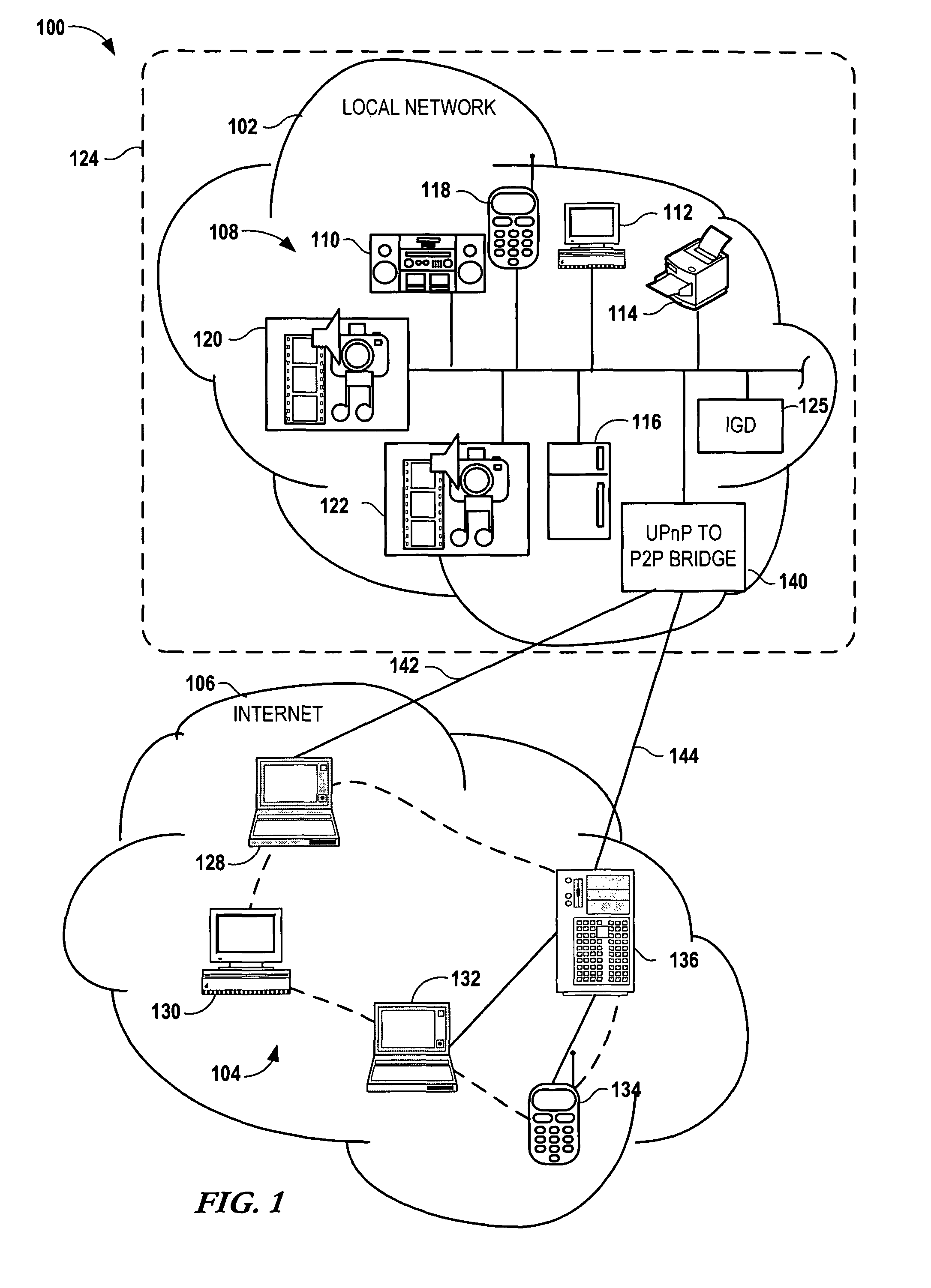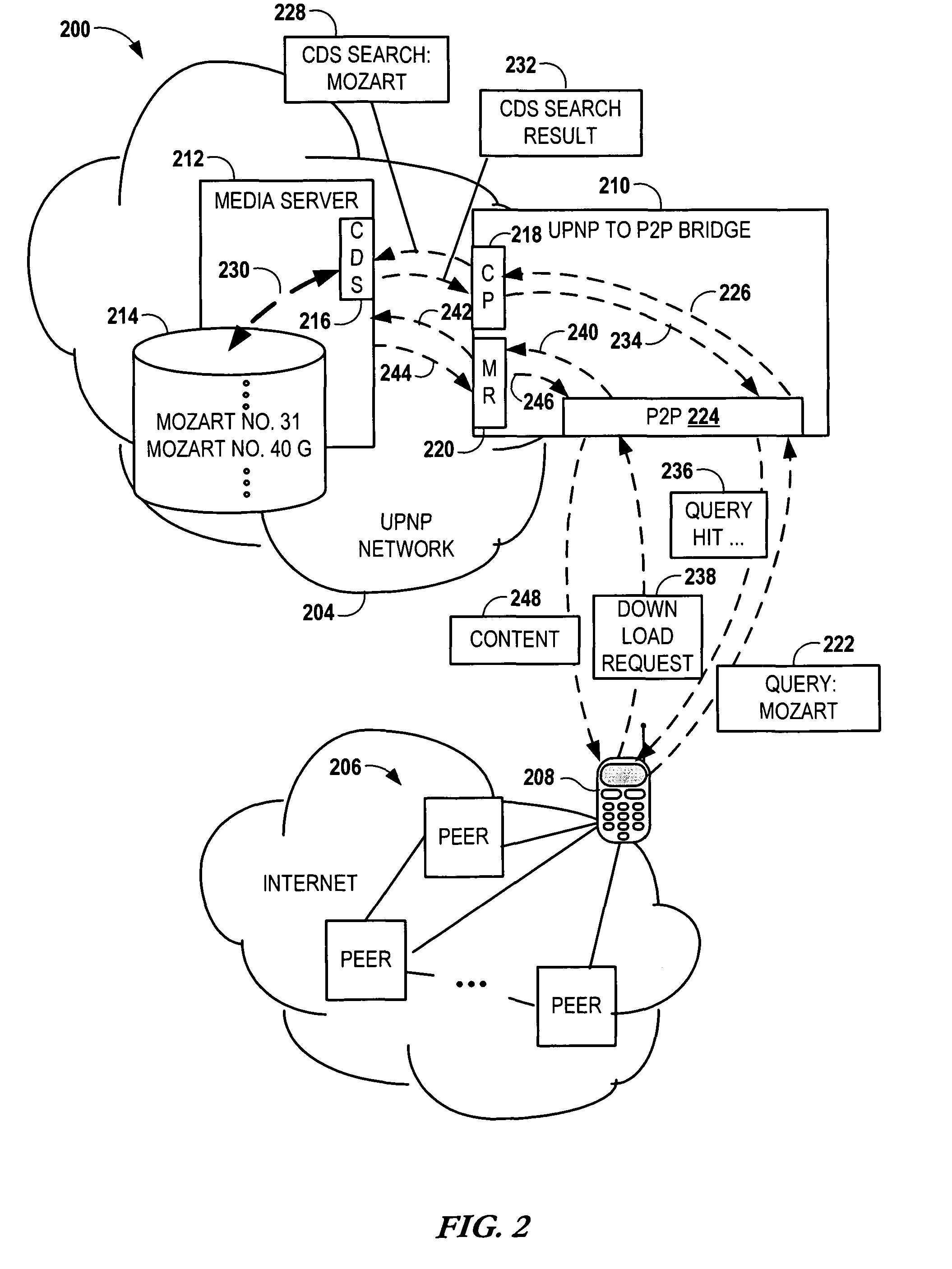Bridging between AD HOC local networks and internet-based peer-to-peer networks
a peer-to-peer network and local network technology, applied in the field of computing devices, can solve the problems of inconvenient media streaming, vpn connection requires a significant amount of overhead, and is not easy to use, and achieves the effect of convenient media streaming and convenient downloading
- Summary
- Abstract
- Description
- Claims
- Application Information
AI Technical Summary
Benefits of technology
Problems solved by technology
Method used
Image
Examples
Embodiment Construction
[0031]In the following description of various exemplary embodiments, reference is made to the accompanying drawings that form a part hereof, and in which is shown by way of illustration various embodiments in which the invention may be practiced. It is to be understood that other embodiments may be utilized, as structural and operational changes may be made without departing from the scope of the present invention.
[0032]Generally, the present invention relates to using a locally coupled device act as a bridge to external peer-to-peer (P2P) networks. In one arrangement, the local network includes Universal Plug and Play (UPnP) compatible devices and services that are made accessible to an Internet P2P network via a locally coupled bridging device. In other configurations, the UPnP / P2P bridge makes UPnP services of the local network available to the P2P network. For example, the bridging device may offer media from one or UPnP media servers to peers of the P2P network. In order to pro...
PUM
 Login to View More
Login to View More Abstract
Description
Claims
Application Information
 Login to View More
Login to View More - R&D
- Intellectual Property
- Life Sciences
- Materials
- Tech Scout
- Unparalleled Data Quality
- Higher Quality Content
- 60% Fewer Hallucinations
Browse by: Latest US Patents, China's latest patents, Technical Efficacy Thesaurus, Application Domain, Technology Topic, Popular Technical Reports.
© 2025 PatSnap. All rights reserved.Legal|Privacy policy|Modern Slavery Act Transparency Statement|Sitemap|About US| Contact US: help@patsnap.com



